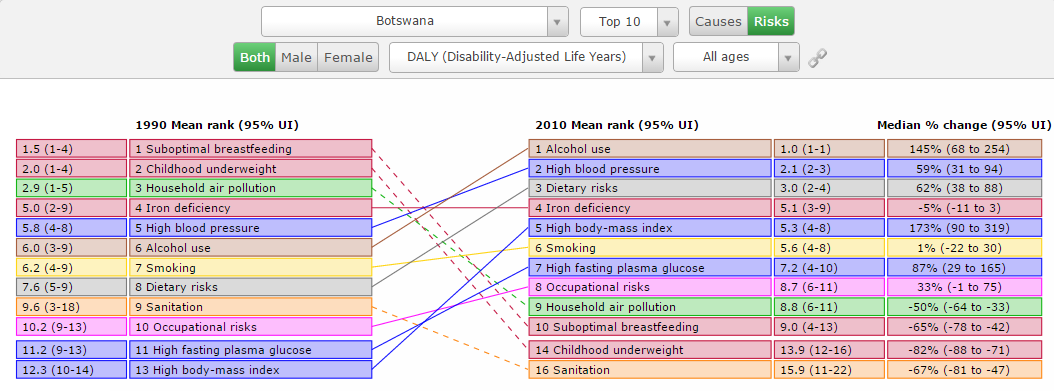Placing restrictions on alcohol does not make a politician popular. When Ian Khama was first elected President of Botswana in 2008, he imposed a 70% tax on alcohol. This action ignited opposition against the health-conscious president, a teetotaler and avid exerciser, from a powerful multinational alcohol company, local vendors, and ordinary citizens.
“Because I firmly believe that this is what we should be doing, whether it’s popular or not doesn’t really bother me,” said Khama, quoted in the Financial Times. “[Alcohol] is an enemy: anything that causes people to lose their lives unnecessarily before their time must be an enemy.”
President Khama cited public health concerns associated with excessive drinking, such as rape, domestic violence, and road injuries, as his motivation for imposing the tax on alcohol.
Lobbying efforts from the alcohol industry convinced Khama’s administration to lower the tax to 30%. But Khama also introduced limits on hours when alcohol could be sold.
In 2013, Botswana Ministry of Health officials shared findings from the Global Burden of Disease (GBD) 2010 Study with President Khama. The GBD findings revealed that alcohol use was the leading risk factor for disease burden in the country in 2010, and the burden associated with this cause had increased 145% since 1990. GBD researchers found that alcohol use in Botswana was linked to early death and disability from conditions such as tuberculosis, alcohol use disorders, road injuries and other unintentional injuries, and violence.
Top 10 risk factors for disease burden in Botswana, 1990 and 2010

For President Khama, the GBD findings vindicated his actions to curb the effects of harmful alcohol use and strengthened his resolve to reduce it.
Since introducing the alcohol tax, President Khama’s government has taken additional steps to curb alcohol use, such as developing a National Framework for Alcohol and Substance Abuse Treatment to deliver rehabilitation services and increasing the frequency of screenings for drunk driving.